Feeding the baby while lying down
How to Effectively and Comfortably Do It
Written by WebMD Editorial Contributors
In this Article
- How to Breastfeed While Lying Down
- Why Breastfeed While Lying Down?
- Is Breastfeeding While Lying Down Safe?
Breastfeeding often means staying in one position for an extended period of time, multiple times each day and night. Fortunately, some breastfeeding positions allow the mother (or person breastfeeding) to lay down and effectively feed a baby. Not only are these reclining positions potentially more comfortable for the mother, but they can also provide some benefits in other situations, too.
How to Breastfeed While Lying Down
The key to breastfeeding while lying down is finding a position that is comfortable and safe for both you and the baby. Here are two common positions you can use for breastfeeding while lying down:
Laid-Back Breastfeeding. In this position, the mother leans back on a couch or bed to nurse her baby. It is best to not lay all the way flat, but prop yourself up partially with some pillows. Make sure that your head and your back are fully supported so that you can completely relax for the feeding session. Baby can lay across your chest, or lengthwise down your torso. There are plenty of benefits to this position including:
- Baby can achieve a deep latch on the breast
- Relaxing for mother
- Can be used on all sizes of babies
- Can be used while feeding twins
- Gravity can help slow the flow of milk if it is too fast for your baby
Side-lying breastfeeding. This position is when a mother lies on her side next to her baby and nurses. It is easiest to do in bed, on the floor, or a large couch. Keep your head and back in a straight line, and put your head on a pillow or your arm. You may need to lift your breast or nipple to your baby's mouth. Sometimes, it's more comfortable to bend your knees, or even put a pillow between them.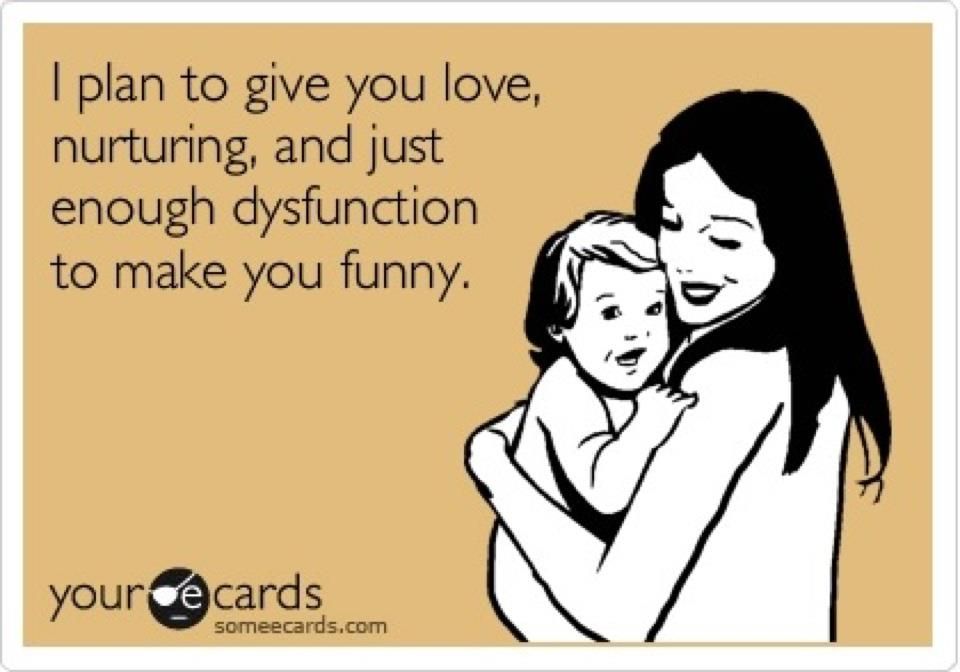
Benefits of side-lying breastfeeding include:
- Easily used in bed
- Allows mother's body to rest
- Avoids pressure on C-Section stitches or other painful areas during recovery
- Can be helpful for mothers with large breasts
Why Breastfeed While Lying Down?
After having a baby, breastfeeding lying down can be helpful for many reasons, including:
Recovery. If a mother is recovering from a C-Section, an episiotomy, or vaginal birth, sitting up for an extended period may be uncomfortable or painful. Nursing while lying down may help to avoid pain while recovering from birth.
Comfort. Supporting the weight of a nursing baby can be hard on a mother's shoulders, arms, and back. For some women, nursing in a reclining or lying-down position eases the strain on her upper body.
Sleep. Falling asleep while breastfeeding can be very dangerous for an infant. However, many mothers who co-sleep (defined as baby sleeping in the same room, on a separate and safe sleep surface) find that night feeds are easier while laying down.
Clogged ducts. It is not uncommon for a breastfeeding woman to experience a clogged milk duct in her breast. Nursing in different positions can help a clog pass, including nursing lying down.
Is Breastfeeding While Lying Down Safe?
Yes, when done correctly, breastfeeding while lying down is perfectly safe. Follow these tips to make sure your baby is comfortable and safe:
- Practice during the day before trying to use it at night
- Ensure that your space is free from excess pillows and bedding
- Do not fall asleep while nursing in a lying-down position
- Always pay attention to your baby
- Always use safe sleep practices for your baby
Side-lying or laid-back nursing can be dangerous if a mother falls asleep; if a baby falls or is smothered by bedding, clothing, or a mother's body, it can be extremely dangerous. But when done correctly, breastfeeding while lying down can be relaxing for both mother and baby.
Ultimately, learning how to utilize a variety of positions for breastfeeding can be very helpful for both mother and baby. Being able to adjust to different situations and locations can make breastfeeding easier and less stressful for both of you. If you have questions or need breastfeeding support, consider reaching out to a lactation consultant or speak to your doctor.
Is it okay to breastfeed your baby while lying down? We tell you
By -
TIMESOFINDIA.COM
Updated: Sep 6, 2019, 12:51 IST
facebooktwitterPintrest
Let’s be honest--parenting is no child’s play. Right from the tumultuous months of pregnancy to giving birth to a breathing, living human, it can be an extremely painful yet overwhelming journey for the mother. However, the struggle does not end here as nursing and taking care of the demands of the baby can be incredibly taxing in itself.
When mamas start breastfeeding your child, sitting for longs hours and holding the baby carefully while nursing can leave them exhausted. Which is why a lot of new mothers prefer to breastfeed while lying down. It might not be one of easiest positions but it does help sleep-deprived mothers to lay down as they nurse their little one.
Should you breastfeed your baby while lying down?
The side-lying breastfeeding position is also called the reclining or lying down position. When you breastfeed in this position, you lie sideways and the baby faces you, lying down sideways as well. Place the little one’s head near your breast so that he/she can latch better. A lot of new mothers consider this position helpful if the baby seems to be irritable with the flow of milk. Additionally, if you have large breasts reclining position can help feed the baby easily.
While this position is surely a boon for the mothers as it saves them from the strain in the neck, back and even arms, lactation experts may have a different opinion when it comes to the newborns.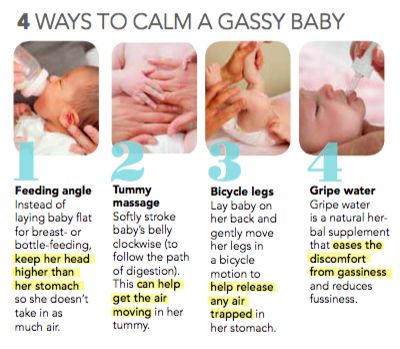 For moms who have just had C-section and are not able to sit straight can surely benefit from the lying down breastfeeding position, it is not considered ideal for babies.
For moms who have just had C-section and are not able to sit straight can surely benefit from the lying down breastfeeding position, it is not considered ideal for babies.
Lying down position is okay to get started with breastfeeding but just might turn fatal for the baby, as there are chances that milk may get absorbed into the lungs. Secondly, it may also increase the risk of ear infection in the baby, if the milk spills from the mouth and reached the ears.
The bottom line
The best way to figure out the ideal breastfeeding position is to talk to a lactation expert to gain more clarity on the same. It is important to figure out a position which is comfortable and safe for both you and your little one. The lying down position can be avoided--especially during the first few months--and can be tried when the babies learn to hold their head. Mothers may also try different breastfeeding positions and keep switching between them.
End of the article
Visual Stories
A solution for picky eating
Featured in Parenting
How to spot signs of trauma in your child
Signs your child is bright and brainy
Baby names starting with alphabet ‘H’
5 ways to calm down an anxious child
10 books of Ruskin Bond kids should read
Beautiful baby names starting with "G"
10 signs your child needs more love
Baby names likely to go extinct in 2023
Money-saving tips for new parents
- Pregnancy Due Date Calculator This calculator tells you the estimated date of your delivery.
- Ovulation Calculator Calculate and understand your fertility window
LATEST VIDEOS
Parenting
- Do's and Don'ts of first pregnancy11:03
- Effective tips to improve your parenting skills 00:59
- Important life lessons parents should teach their children01:21
- How to ensure your teen's emotional well-being04:54
- Tips to help you become a more positive parent00:59
- 5 tips for fussy eaters03:01
- Gauahar Khan on being a to-be working mom, social media and more02:33
- Parenting: Time out should not be a punishment02:20
- 8 things a parent should never say to their child00:59
- Strategies to parent after a loss of a partner04:18
Inside the global race to turn water into fuel
Why we still don't know Covid came from a lab or a market
How different is India’s view from world on same-sex marriage?
Can garbh sanskar give you a 'virtuous, patriotic' baby?
Various breastfeeding positions
Try different breastfeeding positions to find the one that works best for you and your baby. You can see the options in our selection of photos
You can see the options in our selection of photos
Share this information
There is no right or wrong way to hold the baby while
feeding, and mom and baby are sure to find their favorite position.
It is important that both you and your child feel comfortable. 1.2 It's good to learn a few different breastfeeding positions and techniques because life's circumstances often require us to be flexible, especially as your baby gets older and you start to leave the house more often.
Whatever position you choose to breastfeed your baby, remember a few simple rules.
- Prepare everything you need before feeding, including drinks, food, mobile phone, TV remote control, book or magazine. And do not forget to go to the toilet - the feeding process can take a long time!
- Make sure your baby is comfortable. Whichever position you choose, it's important to keep your baby strong, level, and provide good support for their head, neck, and spine.

- You should also be comfortable. Don't stress. If necessary, use pillows of different sizes or rolls of towels to support your back or arms.
- Make sure your baby is latching on correctly. Proper grip is the key to comfort when breastfeeding.
- If your baby does not latch on well or you experience pain while feeding, contact a lactation consultant for help. The specialist will also be able to show you how to hold your baby more comfortably.
1. Relaxed feeding or reclining position
The relaxed feeding position, also known as biological feeding, 1 is often the first position for most mothers. If, immediately after birth, the baby is placed on the mother’s chest or stomach, normally, he instinctively reaches for the breast and tries to grab the nipple. This phenomenon is known as the breast seeking reflex. Skin-to-skin contact stimulates the infant's feeding instinct, and gravity helps him to latch onto the breast and maintain balance.
But it's not just newborns that can be fed in the reclining position - this position is great for babies of all ages. It can be especially helpful if your baby does not latch well in other positions or does not like to be touched during feeding, and also if you have too much milk flow or too large breasts. Isabelle, a mother from the UK, shares her experience: “I had large breasts, and the baby was born small - 2.7 kg, so it was not easy to find a comfortable position at first. After a few weeks, it became clear that there was no “correct” posture for me. As a result, I most often fed lying down, putting the baby on my chest. ”
It is more convenient to feed not lying flat on your back, but half-sitting, leaning on pillows. So you will have a back support and you will be able to watch the baby during feeding.
2. Cradle position
This is the classic
first thought of breastfeeding. Mom sits straight
, and the baby lies on her side on her arm, pressing his stomach against her stomach. 3 Although this is a very popular position, it is not always easy to master with newborns because it gives the baby less support. Try putting a pillow under your back, and put a special breastfeeding pillow on your knees and lean on it with your hands. So you can more reliably support the child, without overstraining your back and shoulders. Just make sure that the baby does not lie too high on the pillow for feeding. The breast should remain at a natural level so that the baby can grab it without effort, otherwise sore nipples cannot be avoided.
3 Although this is a very popular position, it is not always easy to master with newborns because it gives the baby less support. Try putting a pillow under your back, and put a special breastfeeding pillow on your knees and lean on it with your hands. So you can more reliably support the child, without overstraining your back and shoulders. Just make sure that the baby does not lie too high on the pillow for feeding. The breast should remain at a natural level so that the baby can grab it without effort, otherwise sore nipples cannot be avoided.
“I breastfed in the cradle position because it suited me perfectly! It was comfortable and I loved just sitting and looking at my little one,” recalls Rachel, a mother of two from Italy.
3. Cross Cradle
This breastfeeding position looks almost the same as Cradle, but the baby is on the other arm. 3 This gives your baby support around the neck and shoulders so he can tilt his head to latch on. This position is great for breastfeeding newborns and small babies, as well as for babies who do not latch well. Since the baby lies completely on the other hand, it becomes easier to control his position and you can adjust the chest with your free hand.
This position is great for breastfeeding newborns and small babies, as well as for babies who do not latch well. Since the baby lies completely on the other hand, it becomes easier to control his position and you can adjust the chest with your free hand.
Julie, a UK mother of two, finds this position very practical: “I usually breastfeed my youngest in the cross cradle position. So I have a free second hand, and I can take care of an older baby at the same time. ”
Do not hold the baby's head at first, otherwise you may inadvertently press his chin against his chest. Because of this, the child will not be able to take the breast deeply, because the nipple will rest against the base of the tongue, and not against the palate, which will lead to inflammation of the nipples. As the child grows, this position becomes more comfortable, and he can rest his head on your palm (as shown in the photo above).
4. Underarm breastfeeding
In this position, also known as the “ball grip”, the mother sits with the baby lying along her arm at the side, legs towards the back of the chair (or any other seat). 3 Another comfortable position for newborn breastfeeding, you can give your baby good support, full control of his position and a good view of his face. And the baby feels safe in close contact with the mother's body. This position is especially good for those who have had a caesarean section or a premature birth, as well as mothers of twins and women with large breasts.
3 Another comfortable position for newborn breastfeeding, you can give your baby good support, full control of his position and a good view of his face. And the baby feels safe in close contact with the mother's body. This position is especially good for those who have had a caesarean section or a premature birth, as well as mothers of twins and women with large breasts.
“When I breastfed my first daughter, I had very large K-sized breasts—twice the size of her head,” recalls Amy, an Australian mother of two. - I put rolls of towels under each breast, because they were very heavy, and fed my daughter in a pose from under the arm, but only sitting straighter so as not to crush her. This position was also convenient because I had a caesarean section and could not put the baby on my stomach.”
5. Side-lying position
The side-lying position is ideal for a relaxed
nighttime feeding in bed or on the couch. If you had a
caesarean section or ruptures during childbirth, this position may be more comfortable than sitting down. 3 In this position, mother and baby lie side by side, tummy to tummy.
3 In this position, mother and baby lie side by side, tummy to tummy.
“It was difficult for me to sit during endless night feedings, firstly because of the caesarean section, and secondly because of lack of sleep,” recalls Francesca, a mother from the UK. “And then I discovered that you can feed your baby lying on your side and rest at the same time.”
“Because of the short tongue frenulum, Maisie could only properly latch on to her breasts while lying on her side. The lactation consultant showed me how it's done. In this position, the flow of milk was optimal for my daughter, and it was easier for her to keep the nipple in her mouth. As she got older, she became much better at grabbing her breasts in normal positions,” says Sarah, mother of two from Australia.
6. Relaxed breastfeeding after caesarean section
If you can't find a comfortable position for breastfeeding after caesarean section, 3 try holding the baby on your shoulder in a reclining position – this does not stress the postoperative suture and allows you to breastfeed your baby comfortably.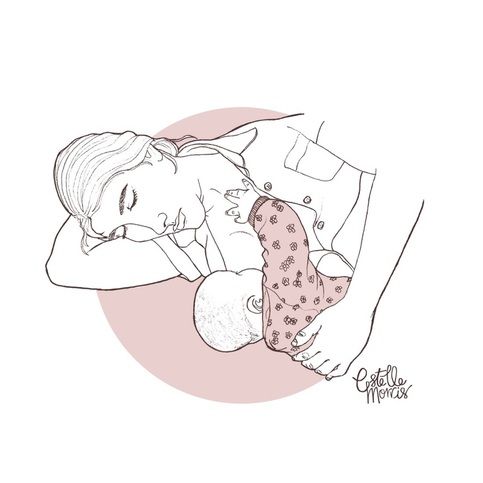 You can also try side feeding.
You can also try side feeding.
7. Sitting upright breastfeeding or “koala pose”
When breastfeeding in an upright position or “koala pose”, the baby sits with a straight back and a raised head on the mother's hip. 4 This position can be tried even with a newborn if it is well supported, but it is especially convenient for feeding a grown child who can already sit up by himself. The upright sitting position, or “koala pose,” is great for toddlers who suffer from reflux or ear infections and feel better sitting. In addition, this pose may be suitable for children with a shortened frenulum of the tongue or reduced muscle tone.
“When my daughter got a little older, I would often feed her in an upright position, which was more comfortable for both of us, and I could still hold her close,” recalls Peggy, a mother from Switzerland. “Besides, it was possible to discreetly breastfeed her in public places.”
8. Overhanging position
In this position, the baby lies on his back, and the mother bends over him
on all fours so that the nipple falls directly into his mouth.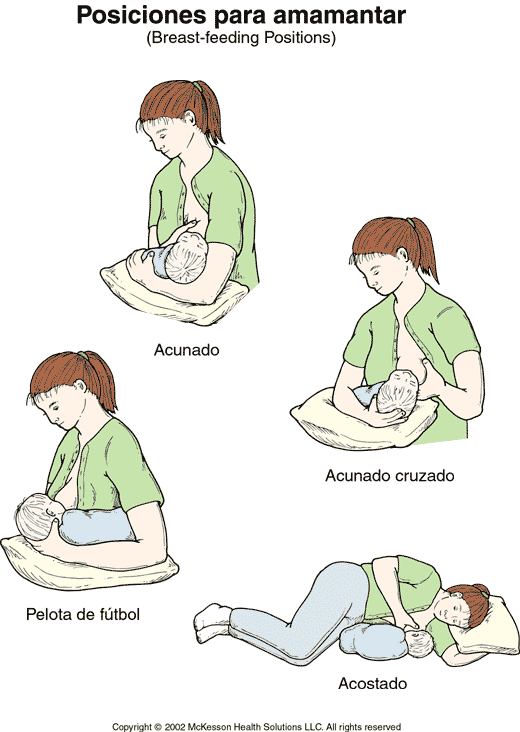 4 Some moms say this breastfeeding position is good to use occasionally for mastitis, when touching the breasts is especially unpleasant. Some say that this breastfeeding position helps with blockage of the milk ducts, although there is no scientific evidence for this yet. You can also feed in the “overhanging” position while sitting, kneeling over the baby on a bed or sofa, as well as reclining on your stomach with support on your elbows. Pillows of various sizes that you can lean on will help you avoid back and shoulder strain.
4 Some moms say this breastfeeding position is good to use occasionally for mastitis, when touching the breasts is especially unpleasant. Some say that this breastfeeding position helps with blockage of the milk ducts, although there is no scientific evidence for this yet. You can also feed in the “overhanging” position while sitting, kneeling over the baby on a bed or sofa, as well as reclining on your stomach with support on your elbows. Pillows of various sizes that you can lean on will help you avoid back and shoulder strain.
“I have breastfed several times in the 'overhang' position for clogged milk ducts when no other means of dissolving the blockage worked. And this pose seems to have helped. I think it’s because of gravity, and also because the breasts were at a completely different angle than with normal feeding, and my daughter sucked her differently, ”says Ellie, a mother of two from the UK.
Feeding in the "overhanging" position is unlikely to be practiced regularly, but in some cases this position may be useful.
“I used to breastfeed in the overhang position when my baby was having trouble latch-on,” says Lorna, mother of two in the UK. - This, of course, is not the most convenient way, but then I was ready for anything, if only he could capture the chest. We succeeded and have been breastfeeding for eight months now!”
9. Breastfeeding in a sling or in a sling
Breastfeeding in a sling takes some practice, but it can be used to go out, look after older children, or even do a little household chores.
The sling is also useful if the baby does not like to lie down or is often attached to the breast. Lindsey, a mother of two in the US, notes: “I used the carrier frequently for both of my children. When we were out, I tied the sarong around my neck and covered the carrier with it. Under such a cape, the baby can eat as much as he wants until he falls asleep.
This breastfeeding position is best when the baby is already good at breastfeeding and can hold his head up by himself.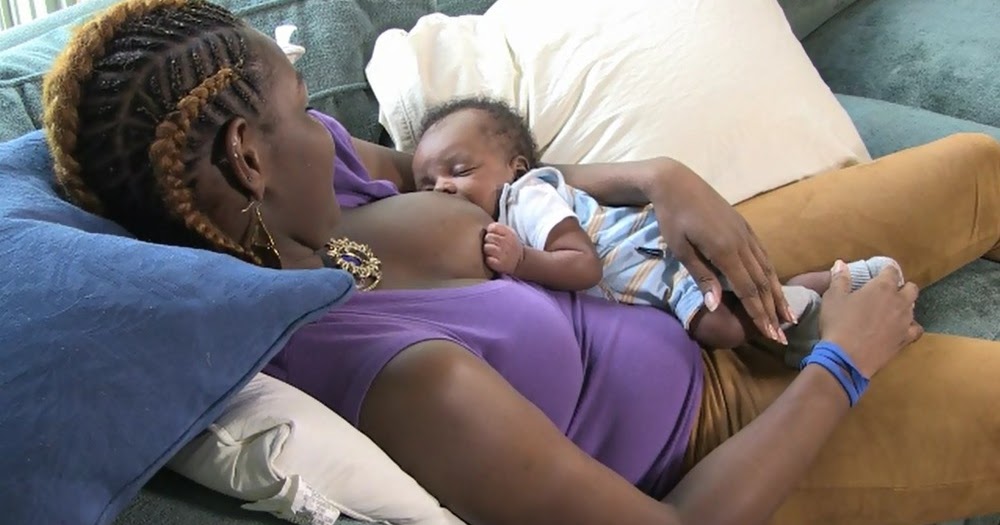 Any slings are suitable for breastfeeding, including elastic and rings, as well as carrying bags. Whatever option you choose, the main thing is that you can always see the face of the child, and his chin does not rest against his chest.
Any slings are suitable for breastfeeding, including elastic and rings, as well as carrying bags. Whatever option you choose, the main thing is that you can always see the face of the child, and his chin does not rest against his chest.
10. Double hand-held breastfeeding
Double hand-held breastfeeding (or “double-ball grab”) is great for mothers of twins—you can breastfeed both at the same time and keep your arms relatively free. 4 When feeding in this position, it is advisable to use a special pillow for breastfeeding twins, especially at first. It will provide extra support and help keep both babies in the correct position, as well as reduce the burden on the abdomen if you had a caesarean section. In addition, the hands are freer, and if necessary, you can deal with one child without interfering with the second.
“My twins were born very tiny and had to be fed every two hours at any time of the day or night. Very soon it became clear: if I want to do anything besides feeding, I need to feed them both at the same time, - says Emma, mother of two children from the UK. “I breastfed them two by hand using a breastfeeding pillow.”
“I breastfed them two by hand using a breastfeeding pillow.”
Other good positions for breastfeeding twins are two criss-cross cradles, one baby in the cradle and the other close at hand, reclining feeding, or sitting upright (one baby on one side, the other on the other).
11. Breastfeeding in the "hand-supported" or "dancer's hand" position
muscle tone (which is typical for premature babies, children suffering from various diseases or Down syndrome), try supporting his head and your chest at the same time. 4 Grasp your chest with your palm underneath so that your thumb is on one side and all the others are on the other. Move your hand slightly forward so that your thumb and forefinger form a "U" just in front of your chest. With the other three fingers, continue to support the chest. With your thumb and forefinger, hold the baby's head while feeding so that his chin rests on the part of the palm between them, your thumb gently holds the baby on one cheek, and your index finger on the other. So the baby gets excellent support, and you can control his position and see if he is holding his breast.
So the baby gets excellent support, and you can control his position and see if he is holding his breast.
Literature
1 Colson SD et al. Optimal positions for the release of primitive neonatal reflexes stimulating breastfeeding. Early Hum Dev . 2008;84(7):441-449. - Colson S.D. et al., "Optimal Positions for Provoking Primitive Innate Reflexes to Induce Breastfeeding." Early Hume Dev. 2008;84(7):441-449.
2 UNICEF UK BFHI [ Internet ]. Off to the best start ; 2015 [ cited 2018 Feb ]. - UNICEF UK, Baby-Friendly Hospital Initiative, Start the Best You Can [Internet]. 2015 [cited February 2018].
3 Cadwell K. Latching - On and Suckling of the Healthy Term Neonate: Breastfeeding Assessment. J Midwifery & Women's Health. 2007;52(6):638-642. — Cadwell, K., "Latching and sucking in healthy newborns: evaluation of breastfeeding." F Midwifery Women Health. 2007;52(6):638-642.
J Midwifery & Women's Health. 2007;52(6):638-642. — Cadwell, K., "Latching and sucking in healthy newborns: evaluation of breastfeeding." F Midwifery Women Health. 2007;52(6):638-642.
4 Wambach K, Riordan J, editors. Breastfeeding and human lactation. Jones & Bartlett Learning ; 2014. 966 p . - Wambach K., Riordan J., "Breastfeeding and female lactation". Burlington, MA: Publishing House Jones & Bartlett Learning ; 2014. Pp. 966.
Positions for breastfeeding | Medela
For most mothers, breastfeeding is a skill that needs to be learned. Therefore, mothers may need extra help in teaching breastfeeding skills. In particular, they may need guidance on how to position the baby and how to attach it to the breast in a way that is comfortable for both mother and baby. There are many breastfeeding positions that can suit every breastfeeding mother. It is very important that the mother always feels comfortable while breastfeeding. As a rule, the baby should be positioned so that his face is turned towards the mother's body, and the head, shoulders and hips are in line. The most commonly used postures are cradle, cross cradle, grip, and side lying.
It is very important that the mother always feels comfortable while breastfeeding. As a rule, the baby should be positioned so that his face is turned towards the mother's body, and the head, shoulders and hips are in line. The most commonly used postures are cradle, cross cradle, grip, and side lying.
Share this information
Cradle position
The cradle position is the most common position for breastfeeding.
The mother's hand supports the baby at the breast. The baby's head lies next to the mother's elbow, while her arm supports the baby along the back and neck. The baby's chest should be turned to the mother's chest.
Cross cradle position
In the cross cradle position, the mother takes the child with her other hand (relative to the cradle position), supporting his head and neck. With the other hand, she can support the breast and, if necessary, squeeze it, so that it is more convenient for the child to grab the nipple.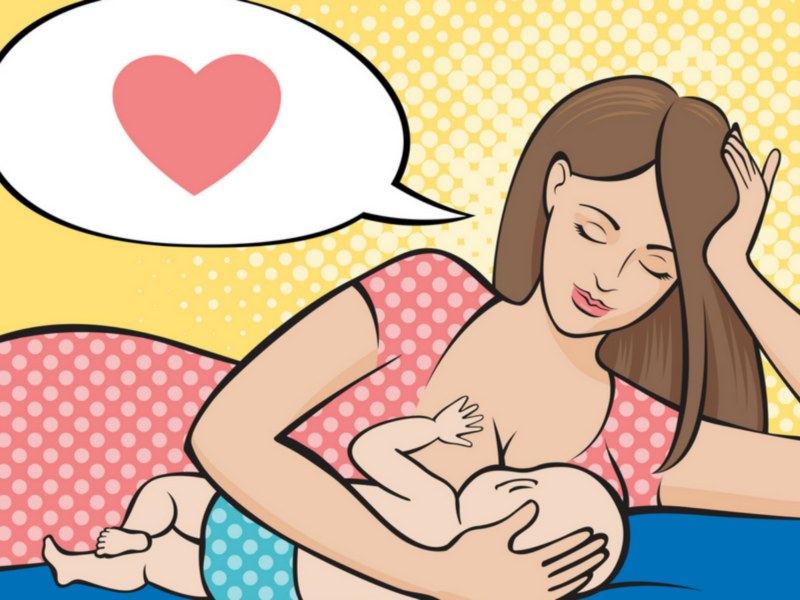
In this position, the mother can easily guide the baby to the breast when he is ready to take her.
“Capture” position
The baby is located on the side of the mother, his body and legs are at her fingertips. The mother holds the baby's head in her hand. In this position, you can also put your hand on a pillow.
This position may be optimal for mothers who have had a caesarean section because there is little or no pressure on the chest and abdomen in this position.
This position can also be beneficial for babies who are born low birth weight or who have problems latching on as the baby's head is fully supported in this position.
Side-lying position
Mother lies on her side facing the baby. The baby's mouth is on the same level as the nipple.
Mom can also use a pillow to support her back and neck.
This position may also be optimal for mothers who have had a caesarean section, as there is little or no pressure on the chest and abdomen in this position.
Literature
American Academy of Pediatrics and The American College of Obstetricians and Gynecologists. Breastfeeding Handbook for Physicians 2006). - American Academy of Pediatrics and American College of Obstetrics and Gynecology. The Doctor's Guide to Breastfeeding, 2006.
Colson, S.D., Meek, J.H., & Hawdon, J.M. Optimal positions for the release of primitive neonatal reflexes stimulating breastfeeding. Early Hum Dev . 84, 441–449 (2008). — Colson S.D., Mick J.H. and Hodon, JM, "Optimal Positions for Provoking Primitive Innate Reflexes to Induce Breastfeeding." Airlie Hume Dev. 84,441-449 (2008).
Cadwell, K. Latching-On and Suckling of the Healthy Term Neonate: Breastfeeding Assessment. J Midwifery Womens Health 52, 638–642 (2007).











